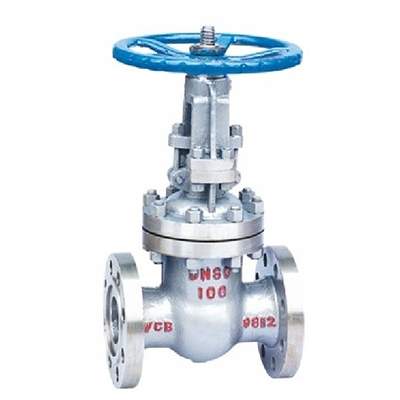Welcome to My Blog!
Before we dive into the content, I’d love for you to join me on my social media platforms where I share more insights, engage with the community, and post updates. Here’s how you can connect with me:
Facebook:https://www.facebook.com/profile.php?id=61563865935136
Now, let’s get started on our journey together. I hope you find the content here insightful, engaging, and valuable.
Introduction

Fire protection systems are the backbone of safety in buildings and industrial facilities, ensuring that emergencies are managed effectively. Among the critical components of these systems, fire fighting gate valves play a pivotal role. These valves are designed to control the flow of water or other extinguishing agents in fire suppression systems, providing reliability and durability under high-pressure conditions. This blog explores the importance, functionality, and benefits of fire fighting gate valves, offering insights into why they are indispensable for fire safety.
What Are Fire Fighting Gate Valves?
Fire fighting gate valves are specialized devices used to regulate the flow of water in fire protection systems, such as sprinklers and hydrants. Unlike other valve types, gate valves operate by lifting a gate or wedge out of the path of the fluid, allowing for full flow with minimal resistance. Their robust construction ensures they can withstand the demanding conditions of fire emergencies, making them a preferred choice for fire suppression applications.
Key Features of Fire Fighting Gate Valves
Gate valves used in fire fighting systems are engineered with specific features to ensure optimal performance. These include corrosion-resistant materials, high-pressure ratings, and designs that allow for quick operation. Their ability to provide a tight seal when closed prevents leaks, ensuring that water is available when needed most. Additionally, many fire fighting gate valves are designed to meet stringent industry standards, such as those set by the National Fire Protection Association (NFPA).
Why Durability Matters in Fire Fighting Gate Valves

Durability is a critical factor in the performance of fire fighting gate valves. These valves are often installed in environments where they may remain unused for years, yet they must function flawlessly during an emergency. Materials like ductile iron, stainless steel, and bronze are commonly used to ensure longevity and resistance to wear, corrosion, and extreme temperatures. A durable gate valve reduces maintenance costs and ensures long-term reliability.
Materials Used in Durable Fire Fighting Gate Valves
The choice of materials significantly impacts the durability of fire fighting gate valves. For instance, ductile iron provides strength and flexibility, while stainless steel offers excellent corrosion resistance. Bronze components are often used in valves exposed to water, as they resist rust and degradation. These materials ensure that the valves remain operational even in harsh environments, such as coastal areas or industrial settings with high humidity.
How Fire Fighting Gate Valves Enhance System Reliability
Reliability is paramount in fire protection systems, where any failure can have catastrophic consequences. Fire fighting gate valves are designed to provide consistent performance, with features like low-friction gate mechanisms and robust sealing systems. These valves are tested rigorously to ensure they can handle high-pressure water flows and maintain functionality over extended periods.
Testing and Certification for Reliable Performance
To guarantee reliability, fire fighting gate valves undergo extensive testing to meet industry standards. Certifications from organizations like UL (Underwriters Laboratories) and FM (Factory Mutual) indicate that a valve has been rigorously evaluated for performance and safety. These certifications provide peace of mind to facility managers, ensuring that the valves will perform as expected during a fire emergency.
Applications of Fire Fighting Gate Valves
Fire fighting gate valves are used in a wide range of applications, from commercial buildings to industrial complexes. They are integral to fire sprinkler systems, standpipes, and fire hydrant systems, ensuring that water or extinguishing agents can be delivered efficiently. Their versatility makes them suitable for both wet and dry fire protection systems, adapting to various environmental conditions.
Common Uses in Fire Protection Systems
In fire sprinkler systems, gate valves control the water supply to different zones, allowing for targeted fire suppression. In standpipe systems, they regulate water flow to hoses used by firefighters. Additionally, fire fighting gate valves are critical in hydrant systems, enabling rapid access to water for firefighting efforts. Their adaptability ensures they meet the needs of diverse fire protection setups.
Fire Fighting Gate Valves Specifications Table
The following table outlines typical specifications for fire fighting gate valves, providing a clear overview of their key characteristics. This information can help facility managers and engineers select the right valve for their fire protection system.
| Specification | Details |
|---|---|
| Material | Ductile iron, stainless steel, bronze |
| Size Range | 2 inches to 12 inches (50 mm to 300 mm) |
| Pressure Rating | Up to 300 psi (20.7 bar) |
| Connection Type | Flanged, threaded, or grooved |
| Operation | Manual (handwheel) or automated (actuator-compatible) |
| Standards Compliance | NFPA, UL, FM |
| Temperature Range | -10°C to 80°C (14°F to 176°F) |
| Corrosion Resistance | High, suitable for wet and dry systems |
| Typical Applications | Fire sprinklers, standpipes, hydrants |
This table provides a general guide, and specific valve models may vary based on manufacturer and system requirements.
Maintenance Tips for Fire Fighting Gate Valves
Proper maintenance is essential to ensure the longevity and reliability of fire fighting gate valves. Regular inspections should be conducted to check for signs of corrosion, leaks, or mechanical wear. Lubricating moving parts and verifying proper operation can prevent issues during an emergency. Additionally, valves should be tested periodically to ensure they open and close smoothly.
Best Practices for Valve Maintenance
To maintain fire fighting gate valves, follow these best practices:
- Conduct annual inspections to identify potential issues.
- Clean valves to remove debris or sediment that could impair function.
- Test valve operation to ensure smooth opening and closing.
- Replace worn components, such as seals or gaskets, as needed.
- Document maintenance activities to comply with fire safety regulations.
Advantages of Using Fire Fighting Gate Valves
Fire fighting gate valves offer several advantages that make them a preferred choice for fire protection systems. Their full-flow design minimizes pressure loss, ensuring maximum water delivery during firefighting efforts. Additionally, their robust construction reduces the risk of failure, and their simple design makes them easy to operate and maintain.
Comparing Gate Valves to Other Valve Types
While other valve types, such as butterfly or ball valves, are used in fire protection, gate valves have unique benefits. Unlike butterfly valves, which may restrict flow, gate valves provide a straight-through path for water. Compared to ball valves, gate valves are better suited for applications where the valve remains fully open or closed, as they are less prone to wear in these positions.
Challenges in Selecting Fire Fighting Gate Valves

Choosing the right fire fighting gate valves requires careful consideration of factors such as system pressure, pipe size, and environmental conditions. Selecting a valve that does not meet the system’s requirements can lead to inefficiencies or failures. Consulting with fire protection engineers and reviewing system specifications can help ensure the correct valve is chosen.
Overcoming Common Selection Challenges
To address selection challenges, consider the following:
- Verify compatibility with existing piping and system components.
- Ensure the valve meets relevant fire safety standards.
- Select materials appropriate for the installation environment.
- Choose a valve size that matches the system’s flow requirements.
Conclusion
Fire fighting gate valves are essential components of fire protection systems, offering unmatched durability and reliability. Their ability to control water flow efficiently, withstand harsh conditions, and meet stringent safety standards makes them a critical investment for any facility. By choosing high-quality gate valves and maintaining them properly, you can ensure the safety of your building and its occupants. For more information or to explore our range of fire fighting gate valves, contact us today to find the perfect solution for your fire protection needs.
FAQ
What is the purpose of fire fighting gate valves?
Fire fighting gate valves regulate the flow of water or extinguishing agents in fire protection systems, ensuring efficient delivery during emergencies.
Are fire fighting gate valves suitable for both wet and dry systems?
Yes, these valves are designed to perform reliably in both wet and dry fire protection systems, depending on their material and construction.
What standards should fire fighting gate valves meet?
They should comply with standards like NFPA, UL, and FM to ensure safety and performance in fire suppression applications.
